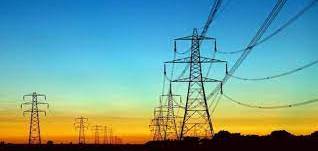
Global demand for electricity surged in 2021, straining major markets, pushing prices to unprecedented highs and driving power sector emissions to an all-time high. Electricity is at the heart of modern life and clean electricity is essential for energy transitions, but in the absence of faster structural change in the sector, the increase in demand over the next three years could lead to a additional market volatility and continued high issuance, according to a recent IEA report .
Spurred by the rapid economic rebound and more extreme weather conditions than in 2020, including a colder than average winter, the 6% rise in global electricity demand last year was the largest by percentage since 2010, when the world was recovering from the global financial crisis. In absolute terms, last year's increase of more than 1,500 terawatt-hours was the largest on record, according to the January 2022 edition of OUCH.
Soaring demand has exceeded the ability of electricity supply sources to keep pace in some major markets, with shortages of natural gas and coal causing price volatility, demand destruction and adverse effects on electricity producers, retailers and end users, particularly in China, Europe and India. About half of last year's global electricity demand growth took place in China, where demand rose by about 10%. China and India suffered power outages at times in the second half of the year due to coal shortages.
“Sharp spikes in electricity prices in recent times have caused hardship for many households and businesses around the world and risk becoming a driver of social and political tensions,” said fatih Birol, executive director of the 'OUCH. “Policymakers should take action now to mitigate the impacts on the most vulnerable and to address the underlying causes. Higher investments in low-carbon energy technologies, including renewables, energy efficiency and nuclear power – as well as an expansion of robust and smart electricity grids – can help us out of the difficulties of 'today. »
The IEA price index for major wholesale electricity markets nearly doubled from 2020 and was up 64% from the 2016-2020 average. In Europe , average wholesale electricity prices in the fourth quarter of 2021 were more than four times their 2015-2020 average. Besides Europe, there were also strong price increases in Japan and India, while they were more moderate in the United States where the gas supply was less disrupted.
Electricity generated from renewable sources grew by 6% in 2021, but that was not enough to meet soaring demand. Coal-fired power generation increased 9%, meeting more than half of the increase in demand and reaching a new all-time high as high natural gas prices drove the switch from gas to coal. Gas-fired generation increased by 2%, while nuclear increased by 3.5%, almost reaching its 2019 levels. In total, carbon dioxide (CO2) emissions from electricity generation increased by 7%, also reaching a record level, after decreasing in the previous two years.
“Emissions from electricity need to fall by 55% by 2030 to reach our net zero emissions scenario by 2050, but in the absence of major policy action from governments, these emissions should stay at about the same level for the next three years,” said Dr. Birol. “This not only underscores how far we are currently on the path to net zero emissions by 2050, but it also underscores the massive changes needed for the electricity sector to fulfill its critical role in decarbonizing the world. energy system in the broad sense. »
For 2022-2024, the report forecasts growth in electricity demand of 2.7% per year on average, although the Covid-19 pandemic and high energy prices bring some uncertainty to this outlook . Renewables are expected to grow by 8% per year on average, representing more than 90% of net demand growth over this period. We expect nuclear production to increase by 1% per year over the same period.
Due to slowing growth in electricity demand and large additions of renewables, fossil fuel-based generation is expected to stagnate in coming years, with coal-fired generation declining slightly as phase-outs and declining competitiveness in the United States and Europe are offset by growth in markets such as China and India. Gas-fired generation is expected to grow by around 1% per year.
Sources:
- IEA
Posted on 2022-02-16 14:33








Comments